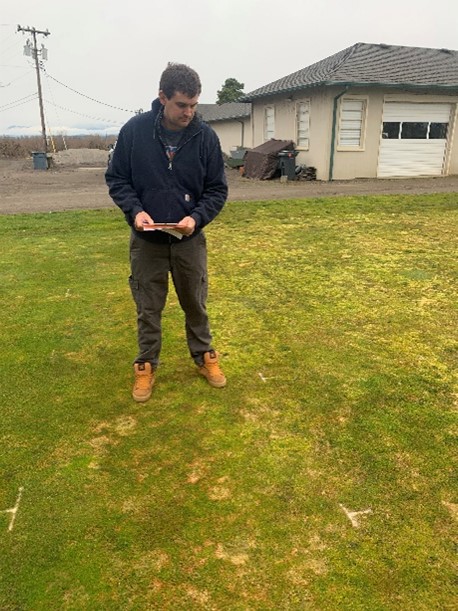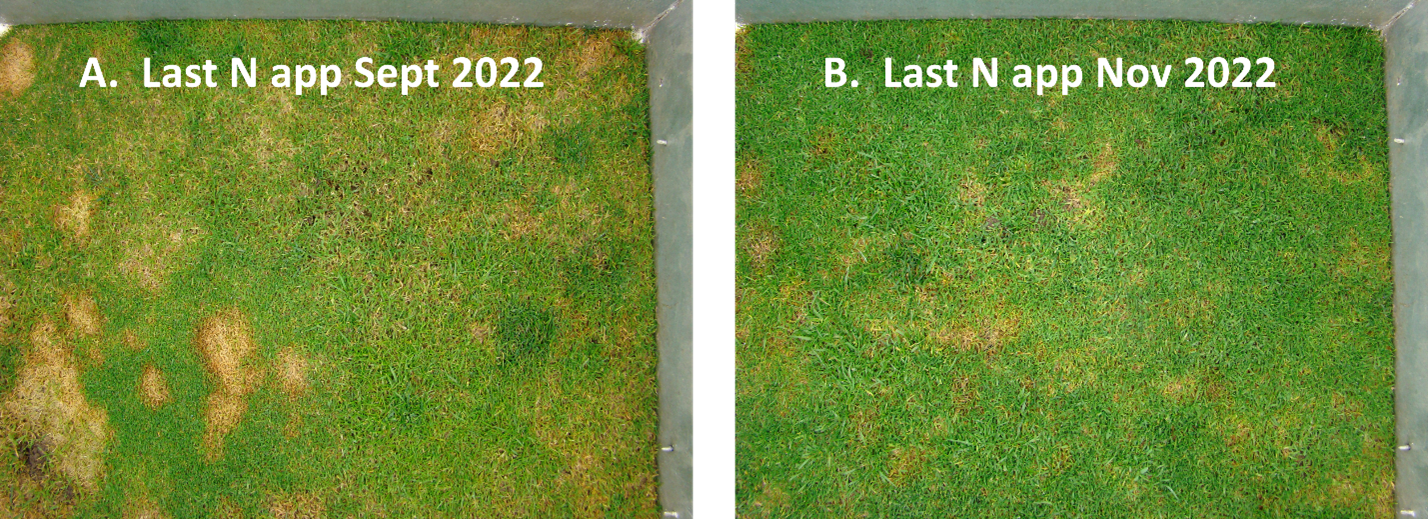By Alec Kowalewski, Oregon State University
In the coastal Pacific Northwest snow fall is minimal, therefore, golf is played year-round. The dominant turfgrass on golf courses in this region is annual bluegrass. The primary pathogen in the Pacific Northwest on annual bluegrass putting greens and fairways is Microdochium patch, a disease which is most problematic during periods of cool, wet weather (October to April). Traditional recommendations for Microdochium patch mitigation include minimal annual nitrogen fertilization rates, with little to no fertilizer applied in the fall and winter months. Recent research would also suggest that excessive levels of potassium increase Microdochium patch activity. However, maintaining low fertility levels is difficult when trying to accommodate year-round golf play in places like the Pacific Northwest because the turfgrass cannot recover from foot traffic.

Recent research conducted at Oregon State University (Figure 1), funded by the WinterTurf USDA-SCRI grant, has been exploring the effects of annual nitrogen and potassium rates applied in the summer months and fall nitrogen and potassium timing. Preliminary results produced by this research determined that summer applications (May, June, July and August) of nitrogen (N) or potassium (K2O) at 0, 1, 2 and 4 lbs per 1,000 sq ft had no effect on Microdochium patch activity in the subsequent fall and winter. Additionally, late fall (October and November) applications of nitrogen to annual bluegrass fairways mitigated Microdochium patch activity during the winter months compared to nitrogen applied in September (Figure 2). This work also determined that potassium applied in September, October or November produced no differences in Microdochium patch activity. This research will continue through next spring (April 2024). If results are consistent, new fertilization recommendations will be communicated to golf course superintendents to reduce reliance on fungicide applications for Microdochium patch management.
